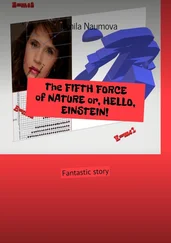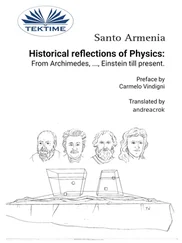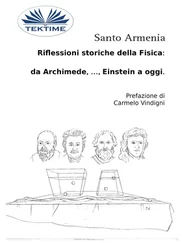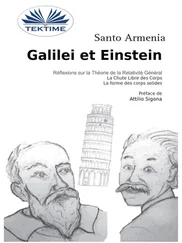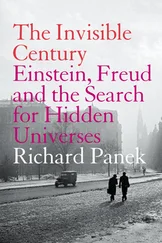George smiled. “In high-energy physics we measure temperatures in energy units like GeV instead of Celsius or Fahrenheit. There’s a special temperature, which we believe is around four hundred GeV — four hundred billion electron volts — where space itself changes its properties in a second-order phase transition, going from the ‘normal’ vacuum of the early Big Bang to a frozen-out vacuum condensate where particles have the masses we measure. ‘Phase transition’ just means space changes its properties, like ice melting or water boiling. The ‘second-order’ business means the change is very smooth, with no conspicuous jumps or bumps.”
Alice nodded, reading her notes. “And you believe the universe made this change early in the Big Bang, after the first millionth of a millionth of a second, and that the SSC will get you to the same temperature.”
“Yes,” said George, “exactly!”
“What I don’t understand,” said Alice, “is why you need the SSC data. If the theory tells you so much about what you’re going to measure, why don’t you just calculate it?”
George laughed. “You sound like a member of the SSC program advisory committee. The scenario I just told you comes from an analogy with the theory used in condensed matter physics to explain superconductivity and related phenomena. In principle, particle theorists could use the same theory, except for a few ‘minor’ problems. They don’t understand the nature of what is being ‘condensed’ from the vacuum, or the underlying forces, or the correct mathematical formalism to use. Therefore, anything they do is a stab in the dark. They need data to set them on the right path. Until we get that data here at the SSC, or perhaps at CERN, we’re stuck where we are, with a paste-up theory that doesn’t really explain the fundamental nature of the universe.”
Alice nodded as she wrote. “And why is it important that it be done now, instead of, say, waiting ten or twenty years until we have better technology and can better afford the expense? As I recall, that’s what some congressmen who opposed the project were suggesting.”
George pursed his lips. “You reporters ask nasty questions,” he said. “When the SSC construction was started in 1988, there was a team of people available to build it who had experience from Fermilab and SLAC and Cornell and were ready to move on to the new project. Building accelerators is an art. If you wait ten or twenty years, it becomes a lost art.
“The same can be said for the people like me who build the detectors and analyze the data. The manpower for the enormous effort needed to successfully build a detector must come from somewhere. That manpower and expertise has been built up in this country since the 1950s, and if Congress had inserted a ten or twenty-year delay, that would have been lost. The trained people would have gone elsewhere, done other things. They would have been unavailable, perhaps retired or even dead, by the time they were needed.”
Alice frowned. “You believe that the SSC could not have been built at all, if it had been delayed and hadn’t been started until, say, 2010?”
George shrugged. “I told you I’m not a very good prophet. All I can say is that the hypothetical people who would start to build the SSC in 2010 would not be the same people who actually built it, and they would surely have far less experience as accelerator builders. There were enough design glitches and start-up problems with the SSC as it was. I’m sure that, starting the project in 2010, there would be a lot more.”
George paused while Alice wrote in her notebook. He smiled, then looked at his watch. “I’m afraid I have to attend a meeting in about fifteen minutes,” he said. “Anything else I can tell you about?”
“Yes,” Alice said. “Next question. I gather that the SSC laboratory has invested quite heavily in telepresence and has some leadership in that field. Why?”
“Well, let’s consider my own case,” said George. “The SSC laboratory is three thousand kilometers from my university. In the old days, if I wanted to do physics here, I’d have to pack up and come with my colleagues, graduate students, and postdocs and either live here most of the year or make nearly weekly trips here. I’d have to spend many days just flying back and forth between Dallas and Seattle, and even more in residence here, away from my classes and most of my students. There was no real alternative. The cost of large particle accelerators is so great that there can be only a few of them, and those who want to use them must rearrange their lives accordingly. My wife divorced me a few years ago because she didn’t like the rearrangements and finally couldn’t tolerate them.”
Alice noted that detail. “Like the astronomers who used to travel to Australia or Chile to use telescopes that could study the Southern sky?” she suggested. She had interviewed some Florida State University astronomers for the Democrat some years ago.
“Exactly,” said George. “Fifteen or twenty years ago, no one thought the situation would ever change. But then came the miracle of bandwidth.”
“Bandwidth?” asked Alice. “That has something to do with communication frequencies and TV channels, doesn’t it?”
“Indeed,” said George. “Over the past few decades the bandwidth, the range of frequencies available for communications and the transfer of information, has been increasing by a factor of ten every five years. There’s a principle that enough small quantitative changes can become a big qualitative change enough small improvements can add up to a technological revolution. That’s what’s happened with bandwidth. It started with TV conferences. We’d link into other laboratories to listen in on their seminars and group discussions. But as the bandwidth got better and we got fiber-optic links that eliminated the satellite-link time delays, we developed telepresence. Instead of watching on a TV monitor, you can go there with telepresence and experience what is happening on the spot. You can walk into somebody’s office and ask what’s going on. We even have some electronic blackboards where you can scrawl equations and diagrams by telepresence or use robot hands and arms to do the same thing.
“If you had walked into my office several hours ago,” George continued, “you would have seen me sitting in a black recliner wearing what look like wraparound sunglasses. We call them ‘magic glasses.’ Lasers from the sidepieces bounce off the front lenses and draw pictures directly on the retinas of my eyes. The unit also has sensors that detect my head and eye movements and points the cameras on the remote accordingly. Because the cameras move when I turn my head, my eyes see just what they would if I were looking at the same scene directly. The vision center of my brain is fooled into thinking it’s all real, and I get an amazing feeling of ‘presence’ that has to be experienced to be appreciated.”
“But if you’re wearing glasses, why did I see your face on the remote without glasses?” Alice asked.
“There’s a TV camera mounted above the couch that scans my face and head, and the magic glasses monitor my eye and eyelid positions. A computer synthesizes a representation of my face from the data and reproduces my features on the remote’s headscreen, with the magic glasses electronically removed. That way the people I’m talking to can see my lip movements, my eye motions, and my facial expressions and react to them. I get 3-D stereo sound from the earpieces, and I wear data cuffs that detect my hand and arm movements. The cuffs buzz when I put my hand through a ‘solid’ object, and I’m now conditioned not to do that.”
Alice heard soft footsteps to her right and turned. A well-dressed man with Oriental features stood next to the sofa. “George, have you seen Hans?” the man said. “I think he’s hiding from me.”
Читать дальше





